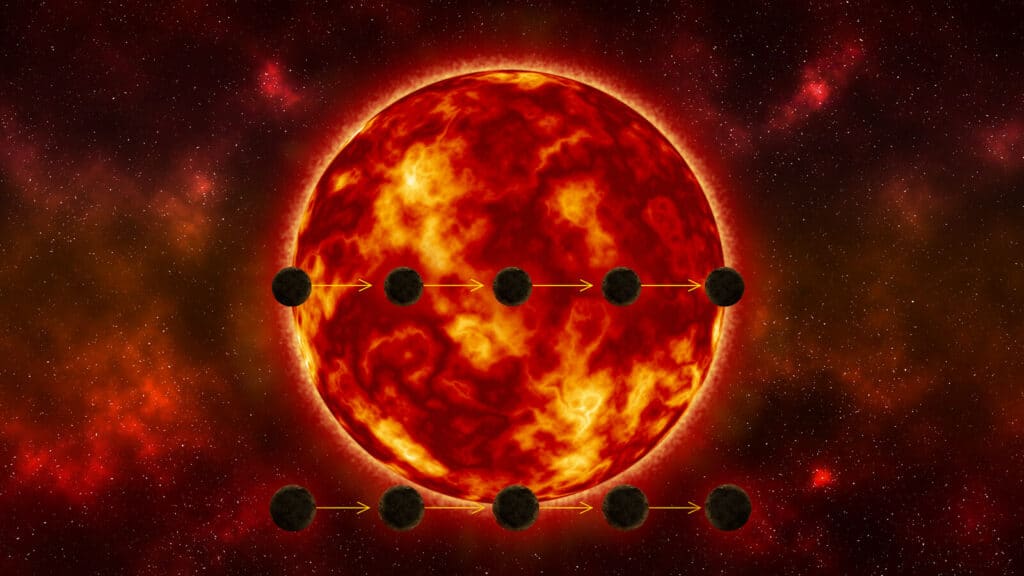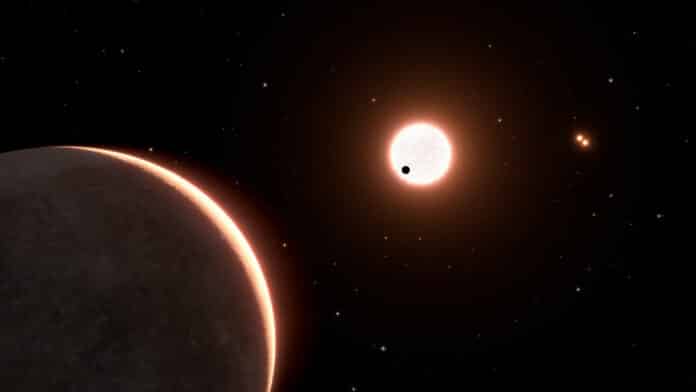The NASA/ESA Hubble Space Telescope has measured the size of the nearest Earth-sized exoplanet that passes across the face of a neighbouring star. This alignment, called a transit, opens the door to follow-on studies to see what kind of atmosphere, if any, the rocky world might have.
The diminutive planet, LTT 1445Ac, was first discovered by NASA’s Transiting Exoplanet Survey Satellite in 2022. But the geometry of the planet’s orbital plane relative to its star as seen from Earth was uncertain because TESS does not have the required optical resolution. This means the detection could have been a so-called grazing transit, where a planet only skims across a small portion of the parent star’s disk. This would yield an inaccurate lower limit of the planet’s diameter.
“There was a chance that this system has an unlucky geometry and if that’s the case, we wouldn’t measure the right size. But with Hubble’s capabilities we nailed its diameter,” said Emily Pass of the Harvard-Smithsonian Center for Astrophysics in Cambridge, Massachusetts.
Hubble observations show that the planet makes a normal transit fully across the star’s disk, yielding a true size of only 1.07 times Earth’s diameter. This means the planet is a rocky world, like Earth, with approximately the same surface gravity. But at a surface temperature of roughly 260 degrees Celsius, it is too hot for life as we know it.
The planet orbits the star LTT 1445A, which is part of a triple system of three red dwarf stars that is 22 light-years away in the constellation Eridanus. The star has two other reported planets that are larger than LTT 1445Ac. A tight pair of two other dwarf stars, LTT 1445B and C, lies about 4.7 billion kilometres away from LTT 1445A, also resolved by Hubble. The alignment of the three stars and the edge-on orbit of the BC pair suggests that everything in the system is coplanar, including the known planets.

“Transiting planets are exciting since we can characterise their atmospheres with spectroscopy, not only with Hubble but also with the James Webb Space Telescope. Our measurement is important because it tells us that this is likely a very nearby terrestrial planet. We are looking forward to follow-on observations that will allow us to better understand the diversity of planets around other stars,” said Pass.
“Hubble remains a key player in our characterisation of exoplanets”, added Professor Laura Kreidberg of the Max Planck Institute for Astronomy in Heidelberg (who was not part of this study). “There are precious few terrestrial planets that are close enough for us to learn about their atmospheres — at just 22 light years away, LTT 1445Ac is right next door in galactic terms, so it’s one of the best planets in the sky to follow up and learn about its atmospheric properties.”
Journal Reference
- Pass, E. K., Winters, J. G., Charbonneau, D., Balkanski, A., Lewis, N., Lally, M., Bean, J. L., Cloutier, R., & Eastman, J. D. (2023). HST/WFC3 Light Curve Supports a Terrestrial Composition for the Closest Exoplanet to Transit an M Dwarf. ArXiv. 2307.02970v2
